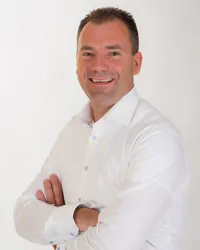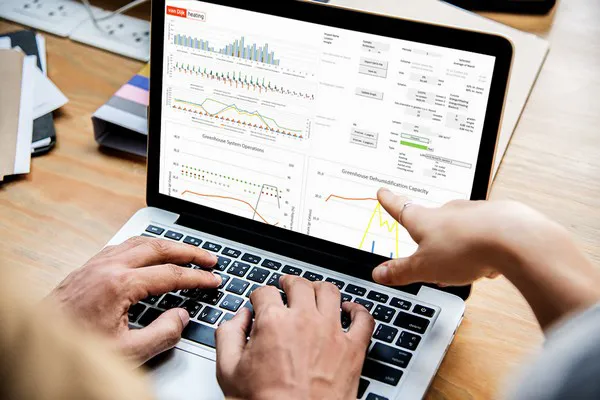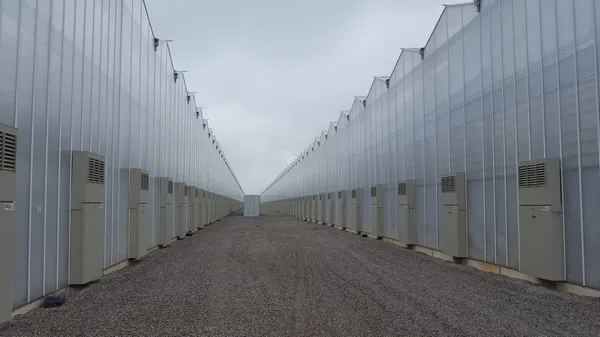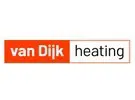The average grower knows the principle of dehumidification well by now. Moisture, with all the adjustments currently being made in greenhouses, is a hot topic because of the energy crisis. At Van Dijk heating, they notice this too. In the conversations the technicians have with growers about dehumidification, they recently added a new tool: a configuration tool. This helps engineers to optimally configure Active Ventilation Systems (AVS).
Every horticultural company is different. All those different greenhouses, crops, heat sources, distribution systems, and location-dependent weather conditions involve a lot of calculation work to arrive at the optimal interpretation and dimensioning of the right AVS system.
 "We have been working there with the ACT configuration tool for a while now. Fortunately, we are not yet seeing any surprising results," laughs Ton van Dijk, sales manager at the Bunnik-based company, since a few months. "We have had experience with AVS for years. The tool is an extra tool to prevent you from over-dimensioning and thus (unnecessarily) over-investing. After all, too much, you often don't notice, except in your wallet. Besides efficient deployment, the tool also gives you a different conversation with the grower. They are now more likely to think about other options. Now that we can show what energy savings are possible or what greenhouse climate gains can be made, it stimulates the grower".
"We have been working there with the ACT configuration tool for a while now. Fortunately, we are not yet seeing any surprising results," laughs Ton van Dijk, sales manager at the Bunnik-based company, since a few months. "We have had experience with AVS for years. The tool is an extra tool to prevent you from over-dimensioning and thus (unnecessarily) over-investing. After all, too much, you often don't notice, except in your wallet. Besides efficient deployment, the tool also gives you a different conversation with the grower. They are now more likely to think about other options. Now that we can show what energy savings are possible or what greenhouse climate gains can be made, it stimulates the grower".
Showing the consequences of choices
To make a calculation, engineers enter some basic data (including acreage, type, number of screen cloths, and type of glass). But also weather variables and data on the grower's cultivation strategy. "Does a grower grow 'cold' or just 'warm,' and does a grower light a lot or just a little? You want to take that into account. All those kinds of things affect which way of dehumidifying fits best and what capacity is needed."
Once the data is entered, the simulation program calculates how a specific AVS system performs throughout the year and what that means for the farm's greenhouse climate and energy management. "I think the most fun step is translating the calculation into practice. The idea for the tool once originated to calculate internally what the ideal AVS configuration is and how many units are needed per situation. Now you can also use the tool very well to show the consequences to the grower of different choices."

ACT configuration tool reveals energy savings and climate gains
Dehumidifying with or without harvesting heat
Van Dijk heating offers three types of AVS systems. Basically, the system works as follows: the AVS unit draws in outside air and/or greenhouse air via a mixing valve and blows this mixture (via a CV block) into the greenhouse. The relatively dry outside air dehumidifies the greenhouse air, and the CV block can be used to heat the mixture to the desired inlet temperature.
In addition, growers have the option of equipping the AVS system with an extra cooling block. "With this, you can harvest latent heat from the greenhouse air. That heat can be reintroduced into the greenhouse later, provided the greenhouse itself is equipped for it," Ton emphasizes. The third option is an AVS with heat recovery, AVS-WTW. Compared to the beach standard AVS unit, in this system, the greenhouse air is extracted with a fan. Through the air/air exchanger, the incoming cold outside air is heated. "Each variant has its own unique features. A lot of energy savings are possible. How much this varies from company to company. The cost and so-called 'return on investment' is also different for each company."
Energy, quality or both
By working with the configuration tool, Van Dijk heating now has the ability to put a lot of 'numbers and graphs' on the table. "If necessary, this allows us to go into depth. Yet we are careful not to overwhelm the grower with too much information. We start 'high over' first, but in doing so, we explain directly what is behind the investment in an AVS system."
For the grower himself, it also differs from what is behind his interest in AVS, Ton notes. "There are still regions internationally where energy is not really an issue, even at the moment. Saving energy is not at the top of growers' lists there. They mainly want to improve the quality of their products. A moisture problem, for instance, gives them mold problems, and they want to get rid of that. We introduce air into the bottom of the greenhouse, generating an even greenhouse climate. This has the advantage that there is less risk of mold growth."

The ACT configuration tool helps optimize the ventilation of Active Ventilation Systems (AVS)
Control over moisture
At Van Dijk heating, the focus of the conversation is on dehumidification and less on temperature. "The really tangible heat, you can still air it out with the windows open, certainly in the Netherlands. We see the biggest advantages for dehumidification in being able to get through the night well, with (several) screen cloths closed as well as at the fringe hours in the morning and (afternoon/evening)."
By this Ton, who has been a grower himself, means the hours between sunrise and when the sun becomes really powerful. "Then there is always the doubt of whether or not to pull open the screen cloth. At the end of the day, you have a similar moment. With an AVS system, the grower gains a technical option to control moisture."
Fossil-free
If saving energy is indeed the main reason to think about dehumidification, Ton already has calculations from the configuration tool on the table by now showing that growers can, in principle, do without fossil energy, depending on exposure level and location, among other things. "I have already seen examples of exposed crops where it can be done without fossil energy. Then you have to put electricity in, but that can be green-generated electricity. Putting energy into cultivation is still necessary because otherwise, you won't get evaporation."
A greenhouse is basically one big energy storage battery, Ton explains. "If you open the windows, that energy flies away. If you are smart with this energy and use a heat pump to harvest the heat from the greenhouse, you can save energy. At the moment, this often involves gas, and so it can be fossil-free. By dehumidifying, the climate in the greenhouse also remains good in the meantime."
Such a calculation example is not one-size-fits-all. "What is best varies per grower, per crop, and per greenhouse. That also applies to our AVS systems." With the ACT configuration tool, Van Dijk heating can now even better customize new construction and modernization and substantiate proposals to users and greenhouse builders in detail. "Our experience is that with changing behavior with additional technology, then often the biggest improvements are possible. I see it a bit like missionary work, although the subject is starting to become increasingly tangible."
For more information:
Ton van Dijk 
Van Dijk heating
Tel.: +31657298725
t.vandijk@vandijkheating.nl
www.vandijkheating.com
